Discover magical Sintra and explore colorful castles and museums with the perfect natural background.
Intro
Sintra is a fairy-tale city near Cape Roca and Lisbon. Due to its unique attractions, Sintra is included on the UNESCO World Heritage List. Over a million travelers visit this region on the Atlantic Ocean annually.
Sintra is a green, forested area with breathtaking landscapes. It is one of the most beautiful places in Europe and should not be missed when visiting Portugal.
Several castles and palaces are in the park, some of which are included in the list of the most beautiful buildings in Europe. It’s amazing how so many incredible structures have appeared in such a relatively small area, and their architecture is inconsistent in the same style.
The available activities of Sintra trip are not limited to visiting architectural attractions. The main ones that deserve your attention and will help diversify your visit to Sintra are discussed below.
Travel Tip: No matter what month you come to Sintra, the wind from the Atlantic blows even in the summer months. Therefore, be sure to take warm clothes with you, especially on the hill near the Pena Palace or if you want to extend your trip with a stop at Cape Roca.
Architectural Wonders of Sintra
Most visitors focus on the architectural assembly when choosing a tour to Sintra. The list of must-visit objects is long, but it can still be covered in one day.
Pena Palace
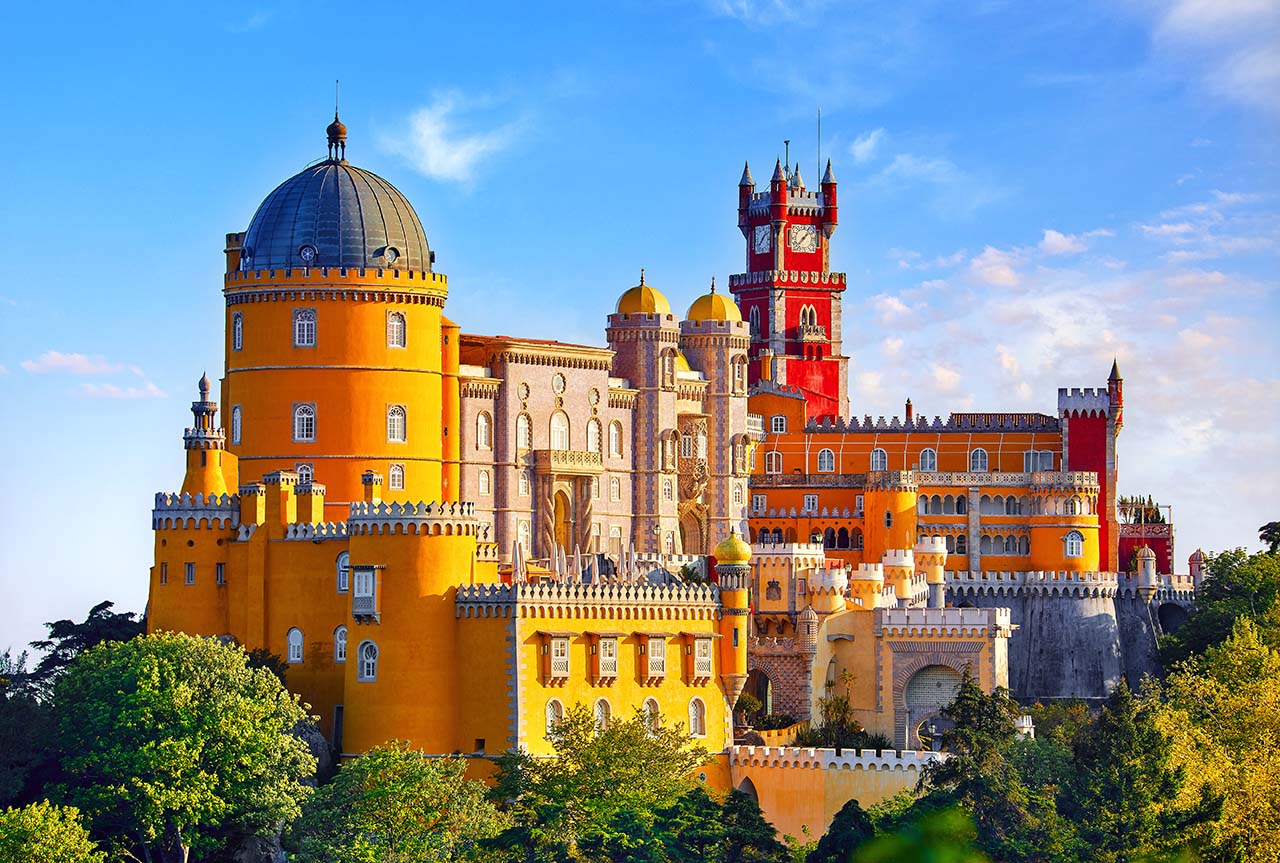
The palace, built in 1840, is Portugal's pride and hallmark. If you ask any resident, the territory includes a unique palace and a beautiful green park. King Ferdinand II built the palace as his dream, as he loved art and theater. The castle turned out to be so fabulously similar to an actual opera set.
Unfortunately, construction was completed in 1885, the same year the king died. Today, the palace is open to tourists who can fully enjoy its unusual architecture and visit the interior, as the variety of room decor is as impressive as the exterior. Remember to go up on the palace's terrace, which offers panoramic views of the whole city. The best photos can be taken here.
Location: Estrada da Pena, 2710-609 Sintra, Portugal
Chalet of the Countess of Edla
In the second half of the 19th century, King Ferdinand II of Portugal, his lady love, and subsequently his wife, Elisa Hensler, Countess of Edla, created a cozy place for spending time together.
The unusual building was located west of the beautiful Pena Park and fully met the couple's romantic moods. It is built in the style of alpine chalets, which were very fashionable in European countries in the past few years.
The chalet is located on the Pena Palace property. The Chalet of Countess Edla, situated in Pena Park, was built in 1870 by order of Prince Consort Fernando II. Visit Sintra day trip to see the charming and romantic and very picturesque pavilion, inspired by houses found in the Swiss mountains.
However, most materials used in its construction, including the cork and masonry, were locally sourced. The surrounding garden and park, with its foliage, is populated with botanical species worldwide.
Location: Estrada da Pena, 2610-609 Sintra, Portugal
Biester Chalet
The mystical Biester Palace promises to delight fans of romantic architecture and surprise them with its natural park and unique landscapes. The late 19th-century Bicester Palace shrouded in Sintra's lush vegetation, has been called a "new treasure."
Built at the end of the 19th century, the palace exemplifies Portuguese romantic architecture. It is also an example of English Gothic Revival and was originally the residence of the Bicester family, who commissioned it from the famous architect Jose Luis Monteiro in 1880.
Monserrate Palace
The building's history goes back several centuries. The last severe restoration took place in the middle of the 19th century by order of the English industrialist and millionaire F. Cook. The palace is a bizarre and harmonious interweaving of several architectural styles.
Indian and Moorish influences are noticeable in the interior and exterior. In the middle of the 20th century, the complex became the state's property and was accessible to visitors on trip to Sintra.
Location: Av. Almeida Garrett 1A, 2710-567 Sintra, Portugal
Regaleira Palace
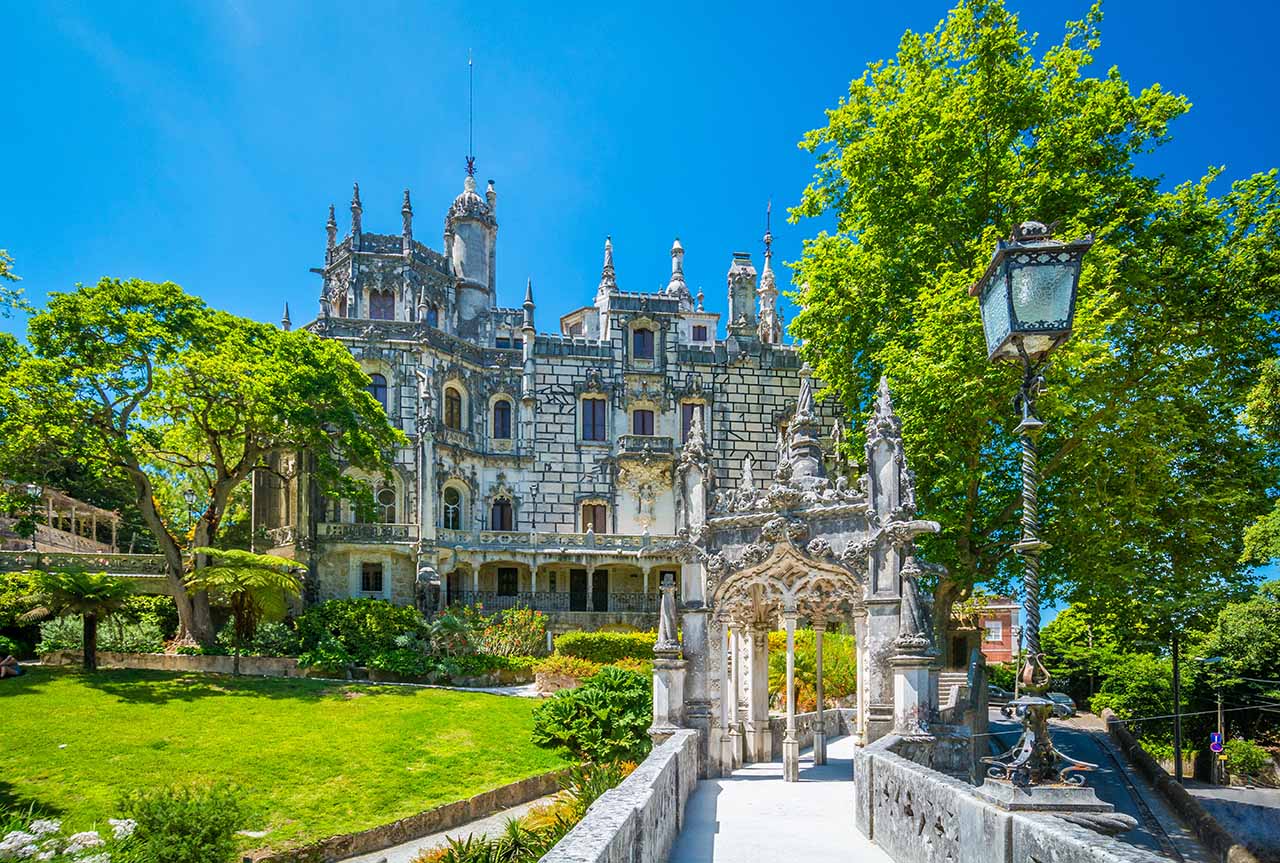
The park, palace, and chapel complex have had many owners throughout history. But one day, a Portuguese millionaire, a Freemason, bought Quinta da Regaleira.
Over six years, he built a palace, a chapel, the "Initiation Well," and all the labyrinths and caves on the complex's territory.
All the objects correspond to his interests and the ideas of Freemasonry and other secret societies. The place is imbued with mysteries and exciting stories. Therefore, it is better to go here with a guide.
Location: R. Barbosa du Bocage 5, 2710-567 Sintra, Portugal
National Palace of the Village of Sintra
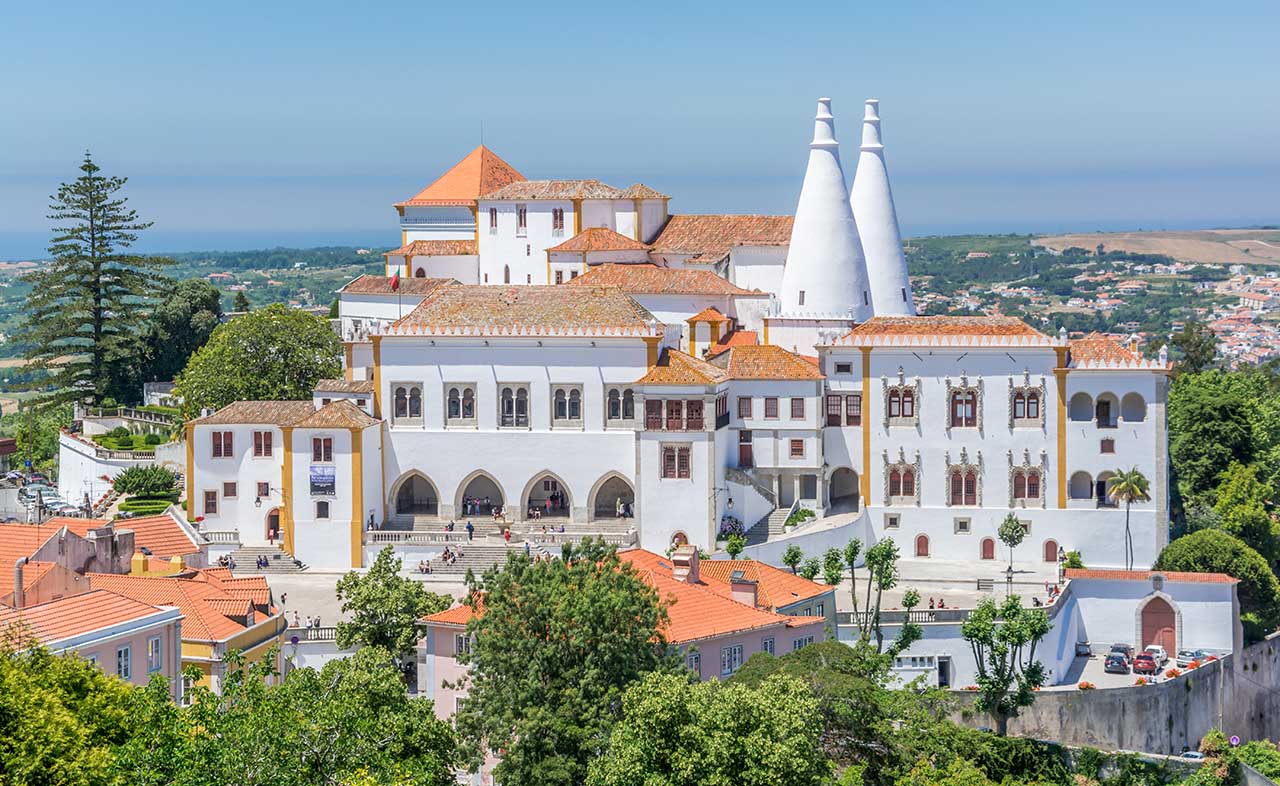
The National Palace of Sintra is part of the city's Cultural Landscape and is on the UNESCO World Heritage List. Portuguese monks lived here in the Middle Ages. Before the royal family moved to the more modern and comfortable Pena Palace, the primary summer residence was the National Palace, located in the historical center of Sintra. Its construction began at the end of the 15th century but has been preserved in its original form.
Particularly noteworthy are its two cone-shaped exhaust pipes, each 33 meters high. The palace is empty but exciting, with Azulejos and Arab traces in its architecture.
Location: Largo Rainha Dona Amélia, 2710-616 Sintra, Portugal
Queluz National Palace
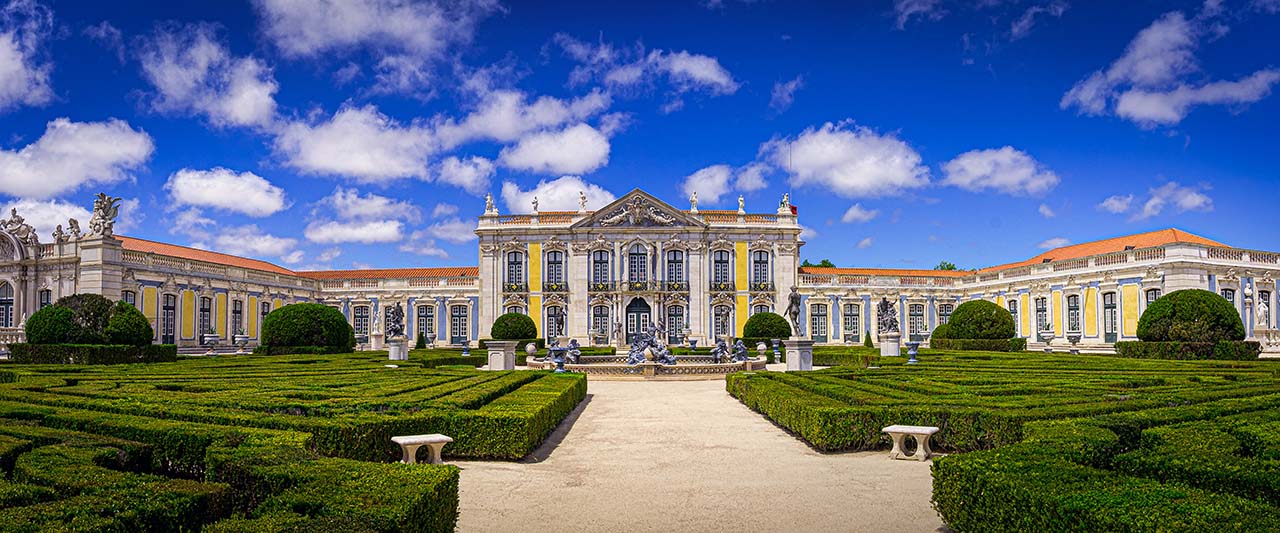
The 18th-century Royal Palace of Queluz (miniature Versailles) and its gardens are decorated with fountains and decorative ponds. You will enjoy a private full-day tour of Sintra's cultural and natural landscape and historic center and visit one of its iconic landmarks.
Nowadays, the Museum of Decorative Arts is located here. The exhibits mostly belonged to the royal family and are still in place. The palace's interior decoration became even more prosperous. Many palace rooms are decorated in the Rocaille style, such as the majestic Throne Room, the walls of which are lined with mirrors and magnificent gilded carvings.
The gardens around the palace are decorated with fountains and decorative ponds in which water gushes from mythological figures. The sculptural group in the Garden of Neptune (Jardin di Neptune) is noteworthy.
Location: Largo Palacio de Queluz, 2745-191 Queluz, Portugal
Capuchos Monastery
The monastery original name is Convento de Santa Cruz (port. Convento da Santa Cruz). It was founded by Alvaro de Castro, the son of Hidalgo Joao de Castro, in 1560.
According to legend, Joao de Castro, having gotten lost while hunting a deer, stopped for the night near the rocks. There, he had a dream about the need to build a Christian temple. Later, according to his father's last will, his son ordered the founding of a monastery.
Surprisingly, it combines centuries-old history, well-groomed conditions, and the almost complete absence of museum paraphernalia, such as intrusive caretakers, explanatory signs, and any infrastructure.
Location: Estr. dos Capuchos, 2705-000 Colares, Portugal
Natural Wonders and Viewpoints of Sintra
Sintra day trip is not only about the architectural gems. It also has many exciting spots for all the overseas natural gems and breathtaking views.
Peninha Viewpoint
The name of this small location comes from the Portuguese word "Penha" ("rock"). Indeed, a medieval monastery is on the rock between the boulders. At 500 meters high, Peninha is one of the highest points of the Serra de Sintra.
If you travel to Sintra, Portugal, on a clear day, you can see Cape Espichel to the south, Ericeiro to the north, Lisbon, and the precise border between the green, mountainous Serra and the gently sloping sunny Riviera.
Most Portuguese, let alone tourists, have yet to learn about this place. An abandoned chapel and an unfinished palace sit on the highest peak of the Sintra Mountains.
The observation deck offers stunning views of dense forests, golden beaches, and the endless ocean. You will also see Cape Roca, the westernmost point of Eurasia.
Location: Sintra-Cascais Natural Park, Sintra, Portugal
Roca Cape
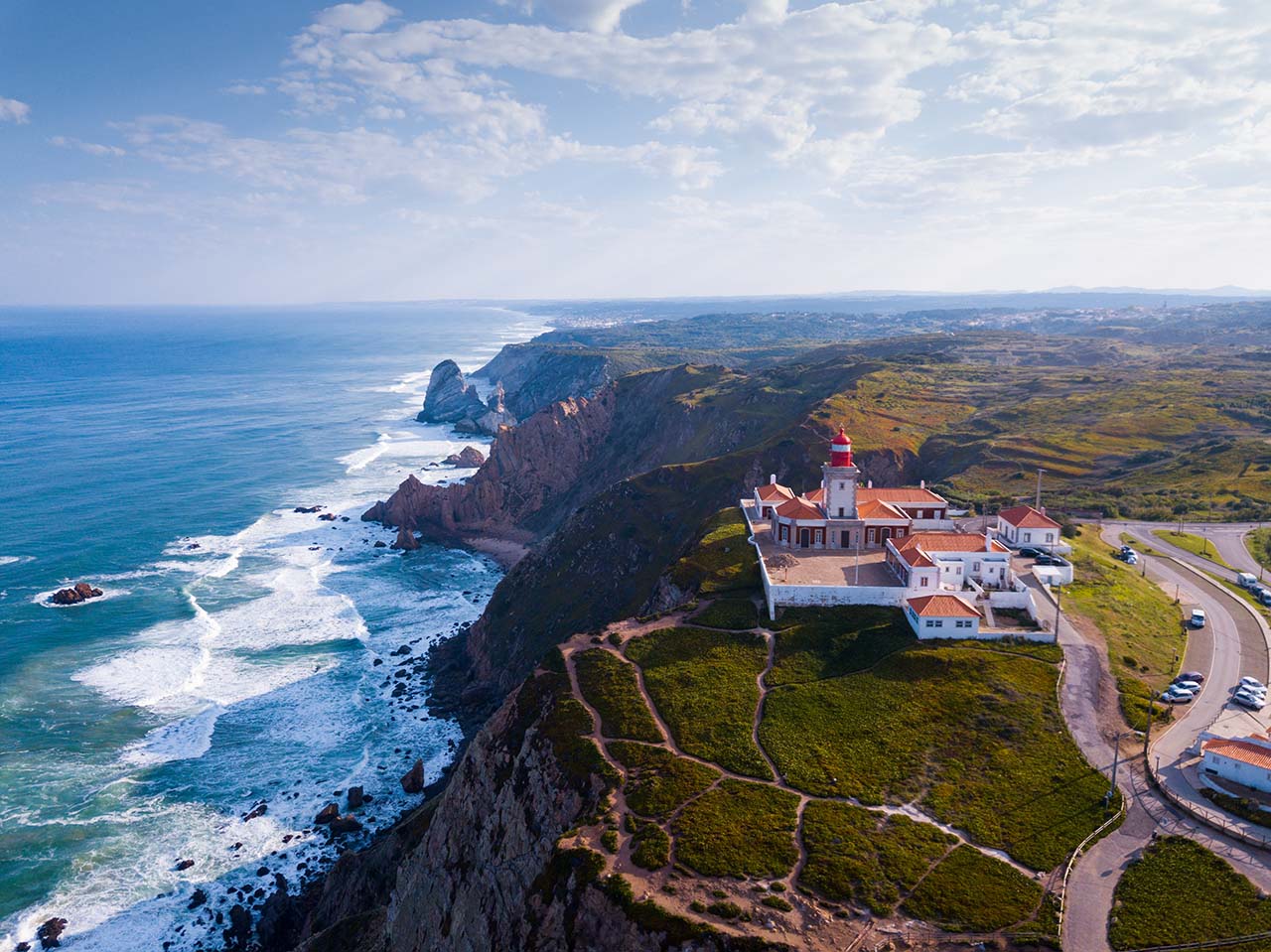
Cabo da Roca is a piece of land that cuts enormously into the water, as if looking into the immensity of the Atlantic Ocean. The lighthouse, which rises on the top of the rock, guides ships that ply the oceans.
The Cabo da Roca Lighthouse informs us that this is where the land ends and the ocean begins, that this is not only the westernmost point of Portugal but also the entire European continent.
Here, you'll see only a strong wind that knocks you off your feet, high rocks against which the waves crash, and the boundless expanse of the ocean—the end of the world.
Location: Estrada do Cabo da Roca s/n, 2705-001 Colares, Portugal
The Natural Escape to the Beaches of Sintra
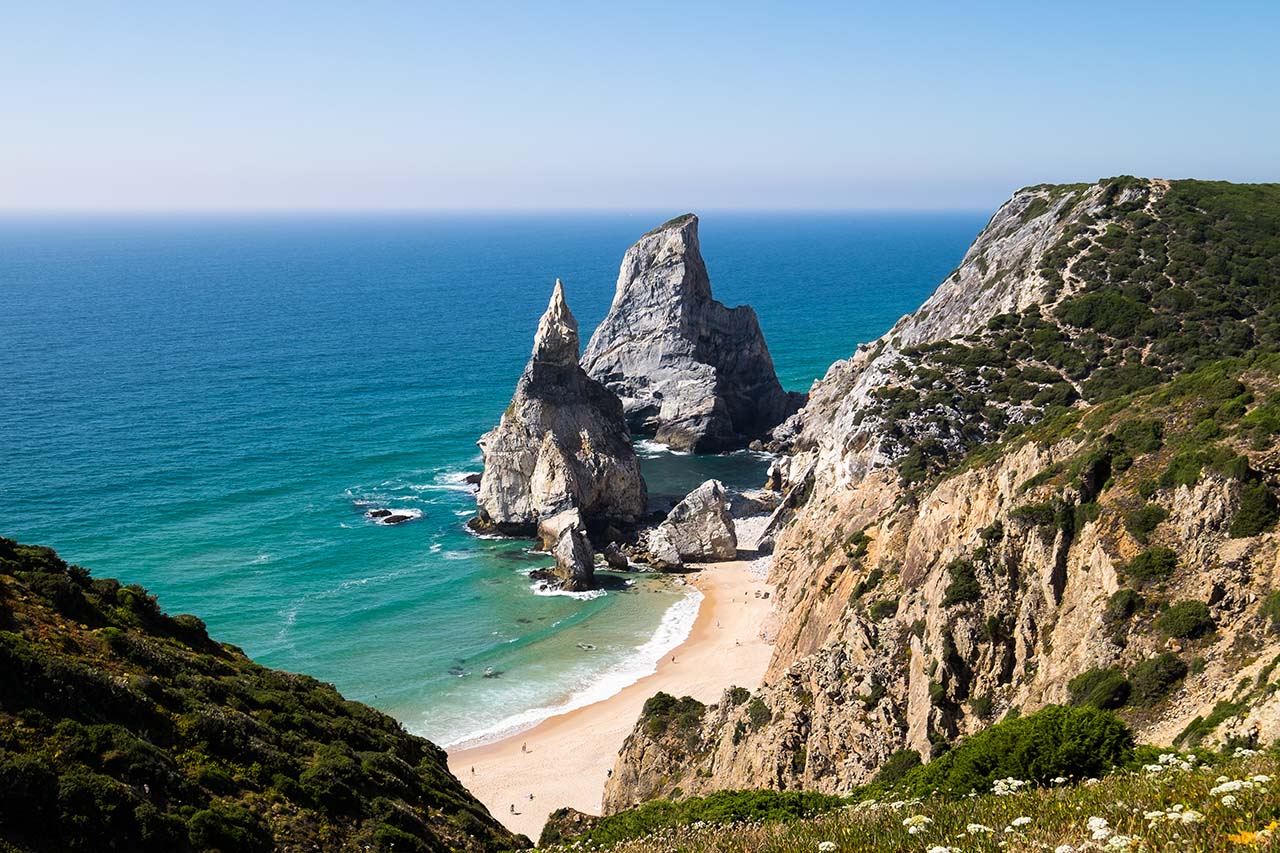
Most travelers prefer the famous beaches of the Lisbon Riviera. But if you want to extend your Sintra voyage, here is a list of picturesque places with aquamarine ocean water and fish restaurants.
Azenhas do Mar: This postcard place is adored by residents of Sintra and Lisbon. Here, you can dine overlooking the Atlantic or dip in the seawater pool.
Ursa: The beach is located near Cape Roca and is known for its scenic beauty and icy water.
Adraga: Perhaps it’s the only beach where the wind blows less than others, so it is prevalent even in winter.
Praia Grande: The beach is accessible, and very popular among locals. It's one of the best spots for sunset viewing
Praia das Macas: This beach is at the end of the Sintra tram. It is relatively large and has areas for beach games.
Magoito: as locals say, there is the iodine-rich sand, so you can tan faster on this beach than on all the others.
Culinary Experience of Sintra
The most apparent gastronomic route is through the restaurants in the city center. While visiting Sintra from Lisbon, stop by Bar do Binho for aperitifs, and go to Cae de Paris with a terrace near a spreading plane tree for lunch. And finish your day with an ice cream from one of the cafes across the street.
Tasca is a type of tavern located on one of Old Town's narrow streets. They serve snacks here, called petiscos in Portuguese. Try grilled cuttlefish and traditional octopus salad with wine vinegar.
Sintra's most famous dishes are queijadas. The former are humble round cakes made from simple ingredients: fresh cheese, cinnamon, sugar and eggs.
The second is a familiar-looking puff pastry with a soft, rich filling of the same egg, grated almonds and sugar. Local seniors claim that some pastry shops still have a tradition of giving burnt quejadas to children and other volunteers.
Summarize
Sintra is one of those places that you need to visit as part of a tour of Portugal. Most of its attractions are already widely known and cannot surprise you. However, when you see all its luxurious wrestlers with your own eyes, you understand that you are in an accurate fairy tale and not a single photograph can convey an impression.
To get the most complete impression of 1 day in Sintra, you must come here with a professional guide. An experienced guide will help you find details and things in each location you will not find in any book. Create your picture of Sintra, and it is guaranteed that you'll want to come back again.
Categories
Table of Contents
- Intro
- Architectural Wonders of Sintra
- Pena Palace
- Chalet of the Countess of Edla
- Biester Chalet
- Monserrate Palace
- Regaleira Palace
- National Palace of the Village of Sintra
- Queluz National Palace
- Capuchos Monastery
- Natural Wonders and Viewpoints of Sintra
- Peninha Viewpoint
- Roca Cape
- The Natural Escape to the Beaches of Sintra
- Culinary Experience of Sintra
- Summarize
 English
English
 Português
Português
 Español
Español
 Français
Français




